
In the United States, national forest is a classification of protected and managed federal lands that are largely forest and woodland areas. They are owned collectively by the American people through the federal government and managed by the United States Forest Service, a division of the United States Department of Agriculture. The U.S. Forest Service is also a forestry research organization which provides financial assistance to state and local forestry industry. There are 154 national forests in the United States.
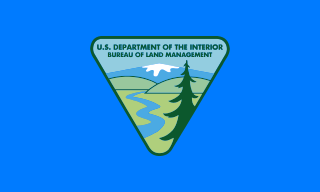
The Bureau of Land Management (BLM) is an agency within the United States Department of the Interior responsible for administering federal lands. Headquartered in Washington, D.C., and with oversight over 247.3 million acres (1,001,000 km2), it governs one eighth of the country's landmass.

The Homestead Acts were several laws in the United States by which an applicant could acquire ownership of government land or the public domain, typically called a homestead. In all, more than 160 million acres of public land, or nearly 10 percent of the total area of the United States, was given away free to 1.6 million homesteaders; most of the homesteads were west of the Mississippi River.

Bruce Edward Babbitt is an American attorney and politician who served as the 47th United States Secretary of the Interior from 1993 to 2001 under President Bill Clinton. He previously served as the 16th governor of Arizona from 1978 to 1987 and was a candidate for President of the United States in the 1988 Democratic primaries.
In all modern states, a portion of land is held by central or local governments. This is called public land, state land, or Crown land. The system of tenure of public land, and the terminology used, varies between countries. The following examples illustrate some of the range.
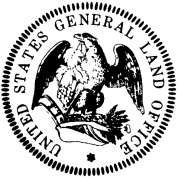
The General Land Office (GLO) was an independent agency of the United States government responsible for public domain lands in the United States. It was created in 1812 to take over functions previously conducted by the United States Department of the Treasury. Starting with the enactment of the Land Ordinance of 1785, which created the Public Land Survey System, the Treasury Department had already overseen the survey of the Northwest Territory, including what is now the state of Ohio.

The Sagebrush Rebellion was a movement in the Western United States in the 1970s and the 1980s that sought major changes to federal land control, use, and disposal policy in 13 western states in which federal land holdings include between 20% and 85% of a state's area. Supporters of the movement wanted more state and local control over the lands, if not outright transfer of them to state and local authorities and/or privatization. As much of the land in question is sagebrush steppe, supporters adopted the name "Sagebrush Rebellion."
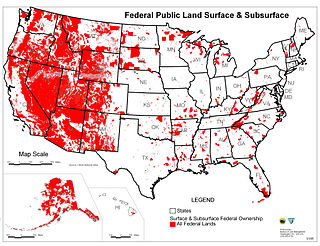
Federal lands are lands in the United States owned by the federal government. Pursuant to the Property Clause of the United States Constitution, Congress has the power to retain, buy, sell, and regulate federal lands, such as by limiting cattle grazing on them. These powers have been recognized in a long line of United States Supreme Court decisions.
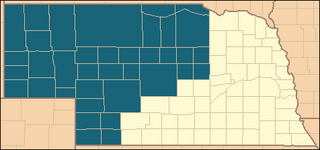
The Kinkaid Act of 1904 is a U.S. statute that amended the 1862 Homestead Act so that one section of public domain land could be acquired free of charge, apart from a modest filing fee. It applied specifically to 37 counties in northwest Nebraska, in the general area of the Nebraska Sandhills. The act was introduced by Moses Kinkaid, Nebraska's 6th congressional district representative, was signed into law by President Theodore Roosevelt on April 28, 1904 and went into effect on June 28 of that year.

The General Revision Act of 1891, also known as the Forest Reserve Act of 1891, was a federal law signed in 1891 by President Benjamin Harrison. The Act reversed previous policy initiatives, such as the Timber Culture Act of 1873, which did not preclude land fraud by wealthy individuals and corporations. The acquisition of vast mineral and timber resources in the Western United States was often cited as a governing motive for such individuals and corporations to claim land rights for future settlement and resource depletion activities. The legacy of the General Revision Act of 1891 is frequently credited as its serving as a catalyst to a series of federal land reform initiatives, notably under President Theodore Roosevelt. From the Reclamation Act of 1902 to the formation of the United States Forest Service in 1905, the General Revision Act of 1891 acted as a critical first piece of federal legislation granting increased plots of publicly allotted land and decreased extraction rights to privately held western land owners in the early 20th century.
The Arizona State Land Department is a department of the state government in the U.S. state of Arizona dedicated to the management of state-owned lands and property.

Sage-grouse are grouse belonging to the bird genus Centrocercus. The genus includes two species: the Gunnison grouse and the greater sage-grouse. These birds are distributed throughout large portions of the north-central and Western United States, as well as the Canadian provinces of Alberta and Saskatchewan. The International Union for Conservation of Nature classified the C. minimus species as endangered in 2020 and C. urophasianus as near threatened in 2016.
Kleppe v. New Mexico, 426 U.S. 529 (1976), was a United States Supreme Court decision that unanimously held the Wild and Free-Roaming Horses and Burros Act of 1971, passed in 1971 by the United States Congress to protect these animals from "capture, branding, harassment, or death", to be a constitutional exercise of congressional power. In February 1974, the New Mexico Livestock Board rounded up and sold 19 unbranded burros from Bureau of Land Management (BLM) land. When the BLM demanded the animals' return, the state filed suit claiming that the Wild Free-Roaming Horses and Burros Act was unconstitutional, claiming the federal government did not have the power to control animals in federal lands unless they were items in interstate commerce or causing damage to the public lands.
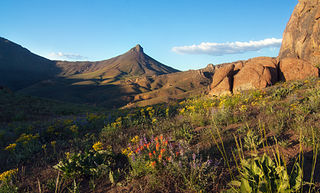
The Trout Creek Mountains are a remote, semi-arid Great Basin mountain range mostly in southeastern Oregon and partially in northern Nevada in the United States. The range's highest point is Orevada View Benchmark, 8,506 feet (2,593 m) above sea level, in Nevada. Disaster Peak, elevation 7,781 feet (2,372 m), is another prominent summit in the Nevada portion of the mountains.
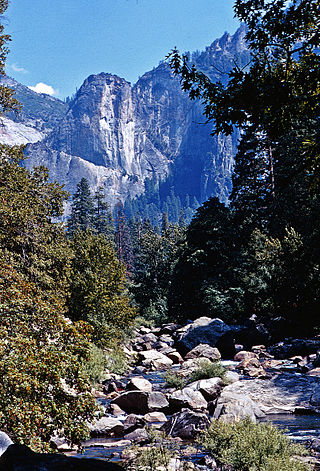
Conservation in the United States can be traced back to the 19th century with the formation of the first National Park. Conservation generally refers to the act of consciously and efficiently using land and/or its natural resources. This can be in the form of setting aside tracts of land for protection from hunting or urban development, or it can take the form of using less resources such as metal, water, or coal. Usually, this process of conservation occurs through or after legislation on local or national levels is passed.
The American Land Rights Association (ALRA) is a Wise Use organization based in Battle Ground, Washington. The group describes itself as "dedicated to the wise-use of our resources, access to our Federal lands and the protection of our private property rights."

American Prairie is a prairie-based nature reserve in Central Montana, United States, on a mixed grass prairie ecosystem with migration corridors and native wildlife. This wildlife conservation area is being developed as a private project of the American Prairie Foundation (APF). This independent non-profit organization aims to include over 3 million acres (12,000 km2) through a combination of both private and public lands.

The Wild and Free-Roaming Horses and Burros Act of 1971 (WFRHBA), is an Act of Congress, signed into law by President Richard M. Nixon on December 18, 1971. The act covered the management, protection and study of "unbranded and unclaimed horses and burros on public lands in the United States."
The 2014 Bundy standoff was an armed confrontation between supporters of cattle rancher Cliven Bundy and law enforcement following a 21-year legal dispute in which the United States Bureau of Land Management (BLM) obtained court orders directing Bundy to pay over $1 million in withheld grazing fees for Bundy's use of federally owned land adjacent to Bundy's ranch in southeastern Nevada.
Grazing rights in Nevada covers a number of rangeland Federal and state laws and regulations applicable to the state of Nevada. Rangelands are distinguished from pasture lands because they grow primarily native vegetation, rather than plants established by humans. Ranchers may lease or obtain permits to use portions of this public rangeland and pay a fee based on the number and type of livestock and the period for which they are on the land.













